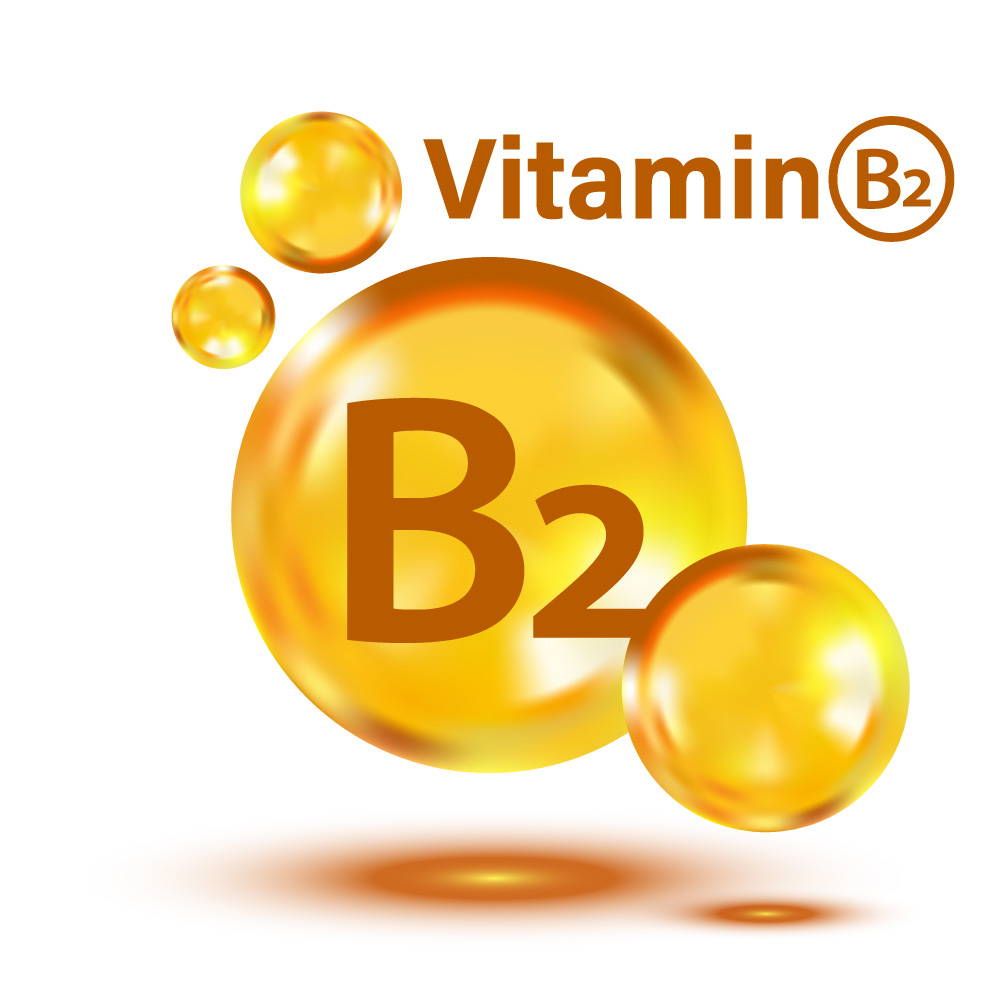SUPPLEMENT - VITAMIN
Explore our effective micro-nutrients and premium ingredients

What is Riboflavin and what does it do?
How much Riboflavin do I need?
LifeStage | RecommendedAmount |
Birth to 6 months | 0.3 mg |
Infants 7–12 months | 0.4 mg |
Children 1–3 years | 0.5 mg |
Children 4–8 years | 0.6 mg |
Children 9–13 years | 0.9 mg |
Teen boys 14–18 years | 1.3 mg |
Teen girls 14–18 years | 1.0 mg |
Men | 1.3 mg |
Women | 1.1 mg |
Pregnant teens and women | 1.4 mg |
Breastfeeding teens and women | 1.6 mg |
What happens if I don’t get enough Riboflavin?
You can develop riboflavin deficiency if you don’t get enough riboflavin in the foods you eat, or if you have certain diseases or hormone disorders.
Riboflavin deficiency can cause skin disorders, sores at the corners of your mouth, swollen and cracked lips, hair loss, sore throat, liver disorders, and problems with your reproductive and nervous systems.
Severe, long-term riboflavin deficiency causes a shortage of red blood cells (anemia), which makes you feel weak and tired. It also causes clouding of the lens in your eyes (cataracts), which affects your vision.
What is an effect of Riboflavin supplements on health?
Migraine headache
Can Riboflavin be harmful?
Riboflavin has not been shown to cause any harm.
Where can I find out more about Riboflavin?
References
- Rivlin RS. Riboflavin. In:Coates PM, Betz JM, Blackman MR, et al., eds. Encyclopedia of DietarySupplements. 2nd ed. London and New York: Informa Healthcare; 2010:691-9.
- Said HM, Ross AC. Riboflavin.In: Ross AC, Caballero B, Cousins RJ, Tucker KL, Ziegler TR, eds. ModernNutrition in Health and Disease. 11th ed. Baltimore, MD: Lippincott Williams& Wilkins; 2014:325-30.
- Institute of Medicine. Food andNutrition Board. DietaryReference Intakes: Thiamin, Riboflavin, Niacin, Vitamin B6, Folate, VitaminB12, Pantothenic Acid, Biotin, and Choline. Washington, DC:National Academy Press; 1998.
- McCormick DB. Riboflavin. In:Erdman JW, Macdonald IA, Zeisel SH, eds. Present Knowledge in Nutrition. 10thed. Washington, DC: Wiley-Blackwell; 2012:280-92.
- Gaylord AM, Warthesen JJ, SmithDE. Influence of milk fat, milk solids, and light intensity on the lightstability of vitamin A and riboflavin in lowfat milk. J Dairy Sci1986;69:2779-84. [PubMedabstract]
- Health information data from U.S.National Institutes of Health.
Better than others
Nine medical doctors used their research findings to develop Dr’s Grow UP in the biotech lab. The result is a product containing 22 ingredients mixed in the perfect proportions to maximize bone health and height development.
Why Bone Science?
Science-Backed Formulations
Carrying out extensive research and keeping up-to-date with the latest scientific findings is our key to develop superior formulations.
Best Growth Support for Kids & Teenagers
Our products contain essential ingredients for a healthy bone and height development of kids from 10 years and teenagers.
Fighting Aging Effects
We are dedicated to create formulations that delay and restrict the extent of adult’s bone density decrease.
Unmatched Product Quality
Only 100% natural ingredients that contain no soy, no gluten, no GMOs, no maltodextrin, and no artificial flavors, colors, or preservatives.
Product Safety
All of our products are manufactured in the US in an FDA and NSF cGMP registered facility.
